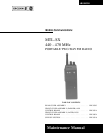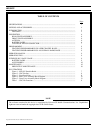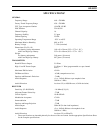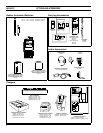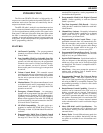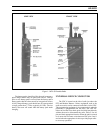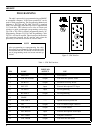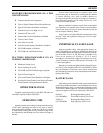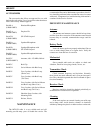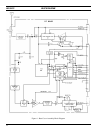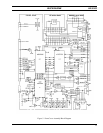
FEATURES PROGRAMMABLE ON A PER
CHANNEL BASIS
• Transmit and Receive Frequencies
• Tone or Digital Channel Guard Encode/Decode
• Type 99 Tone Decode Enabled or Disabled
• Transmit Power Level High or Low
• Transmit STE On or Off
• Channel Busy Lockout Enabled or Disabled
• Carrier Control Timer
• Alert Tones On or Off
• Switch Crystal Frequency Enabled or Disabled
• GE-STAR Enabled or Disabled
• GE-STAR sent with Channel Guard
FEATURES PROGRAMMABLE ON AN
OVERALL RADIO BASIS
• Minimum Volume Level
• Power-Up Beep On or Off
• GE-STAR And GE-STAR Emergency Options
• Type 99 Tone Group Set
• Scan with Channel Guard Enabled or Disabled
• Priority-One Scan Channel is the Selected Channel,
Fixed Channel or Keypad Entered Channel
OPERATOR MANUAL
Complete operating details for the MTL-SX radio are
included in operator manual LBI-38431.
OPERATING TIPS
Antenna location and condition is important when using
a UHF radio. Operating the radio in low areas of terrain,
under power lines or bridges, inside of a vehicle or in a metal
or steel framed building can severely reduce the range of the
unit. Mountains and buildings can also reduce the range of
the unit.
In areas where transmission or reception is poor, some
improvement may be obtained by insuring that the antenna
is vertical. Moving a few yards in another direction or
moving to a higher elevation may also improve communica-
tion. Vehicular operation can be aided with the use of an
externally mounted antenna.
Battery condition is another critical factor in the trouble
free operation of a portable radio. Observe the procedures
listed in the Service Section to insure the battery packs do
not develop the "Memory Effect".
Always observe all of the Federal Communication Com-
mission’s rules and regulations during any service or oper-
ating procedure.
INTRINSICALLY SAFE USAGE
Selected portable radios with appropriate factory in-
stalled F4 Options are certified as Intrinsically Safe by the
Factory Mutual Research Corporation. Intrinsically Safe ap-
proval includes Class I, II, III, Division 1 hazardous loca-
tions in the presence of Groups C, D, E, F and G
atmospheres. Non-Incendive approval includes Class I, Di-
vision 2 hazardous locations in the presence of Groups A, B,
C and D atmospheres.
Hazardous locations are defined in the National Electri-
cal Code. Useful standards NFPA 437A and NFPA 437M for
the classifications of hazardous areas can be ordered from
the National Fire Protection Association, Batterymarch Park,
Quincy, MA 02269.
BATTERY PACKS
Only battery packs identified with a green latch shall be
used with a portable radio that is rated and labeled as Factory
Mutual Intrinsically Safe. Use of non-specified battery packs
voids Factory Mutual approval. The following battery pack
options are approved for use in intrinsically safe radios:
PAPA1F Rechargeable Battery Pack,
(19A704860P6) Extra High Capacity (Tall Case)
PAPA1G Rechargeable Battery Pack,
(19A704850P6) High Capacity (Short Case)
LBI-38433
9



